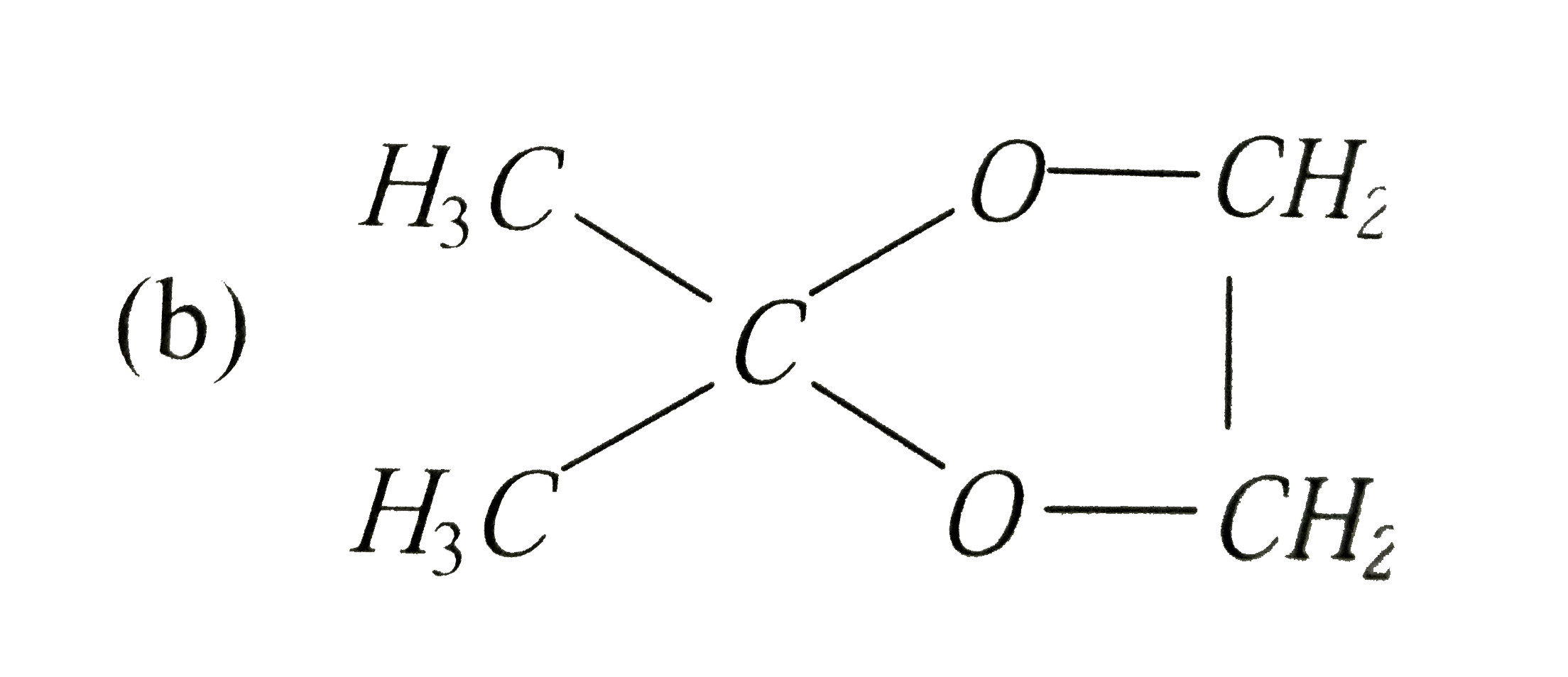The enolic form of acetone ⎛⎜ ⎜⎝CH3−OH∣C=CH2⎞⎟ ⎟⎠ contains
10σ-bonds, 1π bond and 1 lone pair
8σ-bonds , 2π-bonds and 2 lone pairs
9σbonds , 1π bond and 2 lone pairs
9σ bonds, 2π bonds and 1 lone pair
The correct Answer is:C
To determine the number of sigma bonds, pi bonds, and lone pairs in the enolic form of acetone, which is represented as CH₃-C(OH)=CH₂, we can follow these steps:
Step 1: Identify the Structure
The enolic form of acetone can be represented as:
HH C/HC|O|H
This structure shows that we have two carbon atoms (C) connected by a double bond, and one of the carbons is also connected to a hydroxyl group (OH).
Step 2: Count Sigma Bonds
1. C-H Bonds: Each carbon (C) in the structure is bonded to hydrogen (H) atoms.
- The first carbon (C1) is connected to three hydrogen atoms (C-H bonds).
- The second carbon (C2) is connected to two hydrogen atoms (C-H bonds).
Total C-H bonds = 3 (from C1) + 2 (from C2) = 5 sigma bonds.
2. C-C Bond: The two carbon atoms are connected by a single bond (C-C).
- This is 1 sigma bond.
3. C-O Bond: The carbon (C2) is connected to the oxygen (O) in the hydroxyl group (OH).
- This is also a sigma bond.
Adding these together:
- Total sigma bonds = 5 (C-H) + 1 (C-C) + 1 (C-O) = 7 sigma bonds.
Step 3: Count Pi Bonds
- The double bond between the two carbon atoms (C1 and C2) consists of one sigma bond and one pi bond.
- Therefore, there is 1 pi bond.
Step 4: Count Lone Pairs
- The oxygen atom in the hydroxyl group (OH) has two lone pairs of electrons.
- The carbon atoms do not have any lone pairs.
Thus, the total number of lone pairs = 2 lone pairs (from the oxygen atom).
Final Summary
- Sigma bonds: 7
- Pi bonds: 1
- Lone pairs: 2
The enolic form of acetone can be represented as:
HH C/HC|O|H
This structure shows that we have two carbon atoms (C) connected by a double bond, and one of the carbons is also connected to a hydroxyl group (OH).
1. C-H Bonds: Each carbon (C) in the structure is bonded to hydrogen (H) atoms.
- The first carbon (C1) is connected to three hydrogen atoms (C-H bonds).
- The second carbon (C2) is connected to two hydrogen atoms (C-H bonds).
Total C-H bonds = 3 (from C1) + 2 (from C2) = 5 sigma bonds.
- This is 1 sigma bond.
- This is also a sigma bond.
- Total sigma bonds = 5 (C-H) + 1 (C-C) + 1 (C-O) = 7 sigma bonds.
- The double bond between the two carbon atoms (C1 and C2) consists of one sigma bond and one pi bond.
- Therefore, there is 1 pi bond.
- The oxygen atom in the hydroxyl group (OH) has two lone pairs of electrons.
- The carbon atoms do not have any lone pairs.
- Sigma bonds: 7
- Pi bonds: 1
- Lone pairs: 2
Similar Questions
Knowledge Check
- Question 1 - Select One
Identify the product for the following reaction
CH3−O∣∣C−CH3+CH2OH∣CH2OHHCl⇐⇒ACH3−CH3∣CHOH+COOH∣COOHB C
C DNo reaction
DNo reaction - Question 2 - Select One
Total number of steroisomer of compound CH3−OH∣CH−C−OH∣CH−C≡C−OH∣CH−CH2−CH3
A2B4C6D8 - Question 3 - Select One
The major product (A) formed in the following reaction is
CH3−CH3∣CH−CH2−CH3−CH−CH3∣N∣CH3−⊕CH2−CH3OH−AΔACH2=CH2BCH3C∣CH3=CH2CCH3−CH=CH2DCH3−CH=CH3
Compare enol percent
(I)CH3−O∣∣C−CH3
(ii)CD3−O∣∣C−CH3
(iii)CH3−O∣∣C−CD3View SolutionThe IUPAC name of the following compound will be
CH3−O∣∣C−CH2−OH∣CH−CHO isView SolutionThe number of meso form of the given compound (A) is
CH3−OH∣CH−OH∣CH−OH∣CH−CH3View SolutionThe IUPAC name of
CH3−O∣∣C−CH2−OH∣CH−CHO
isView SolutionThe IUPAC name of
CH3−O∣∣C−CH2−OH∣CH−CHO isView Solution

